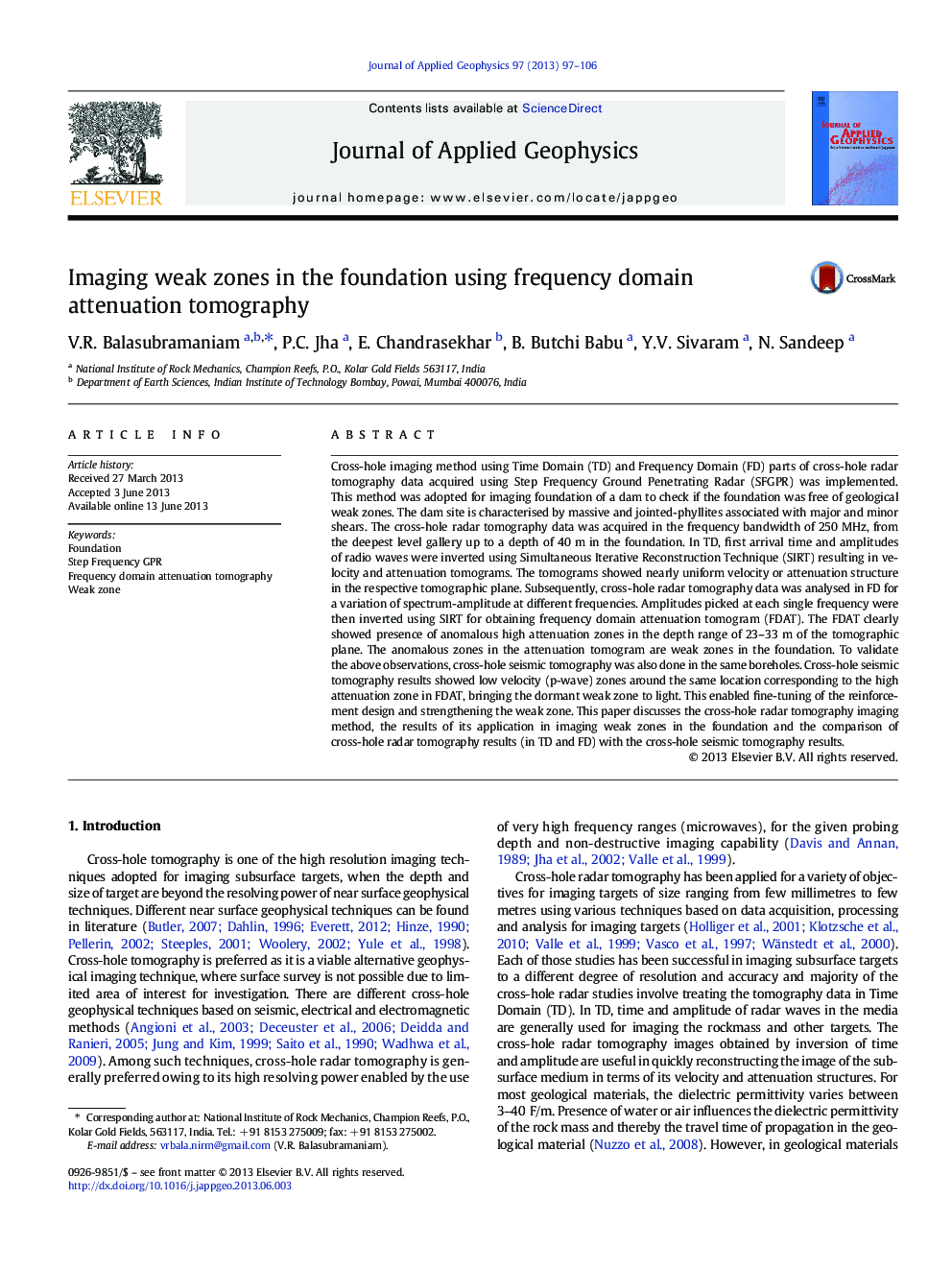| کد مقاله | کد نشریه | سال انتشار | مقاله انگلیسی | نسخه تمام متن |
|---|---|---|---|---|
| 4740227 | 1641154 | 2013 | 10 صفحه PDF | دانلود رایگان |
• Cross-hole SFGPR tomography data analysis in TD and FD; FD attenuation (FDAT).
• Inversion of TD and FD data by SIRT; TD - Velocity and Attenuation Tomograms.
• FDAT (7.5-11 dB/m) at 200 MHz reveals weak zone in foundation.
• Cross-hole P-wave low velocity (2200-3500 m/s) validates FDAT weak zone.
• FDAT approach demonstrated in cross-hole imaging of dormant geological weak zone.
Cross-hole imaging method using Time Domain (TD) and Frequency Domain (FD) parts of cross-hole radar tomography data acquired using Step Frequency Ground Penetrating Radar (SFGPR) was implemented. This method was adopted for imaging foundation of a dam to check if the foundation was free of geological weak zones. The dam site is characterised by massive and jointed-phyllites associated with major and minor shears. The cross-hole radar tomography data was acquired in the frequency bandwidth of 250 MHz, from the deepest level gallery up to a depth of 40 m in the foundation. In TD, first arrival time and amplitudes of radio waves were inverted using Simultaneous Iterative Reconstruction Technique (SIRT) resulting in velocity and attenuation tomograms. The tomograms showed nearly uniform velocity or attenuation structure in the respective tomographic plane. Subsequently, cross-hole radar tomography data was analysed in FD for a variation of spectrum-amplitude at different frequencies. Amplitudes picked at each single frequency were then inverted using SIRT for obtaining frequency domain attenuation tomogram (FDAT). The FDAT clearly showed presence of anomalous high attenuation zones in the depth range of 23–33 m of the tomographic plane. The anomalous zones in the attenuation tomogram are weak zones in the foundation. To validate the above observations, cross-hole seismic tomography was also done in the same boreholes. Cross-hole seismic tomography results showed low velocity (p-wave) zones around the same location corresponding to the high attenuation zone in FDAT, bringing the dormant weak zone to light. This enabled fine-tuning of the reinforcement design and strengthening the weak zone. This paper discusses the cross-hole radar tomography imaging method, the results of its application in imaging weak zones in the foundation and the comparison of cross-hole radar tomography results (in TD and FD) with the cross-hole seismic tomography results.
Journal: Journal of Applied Geophysics - Volume 97, October 2013, Pages 97–106
